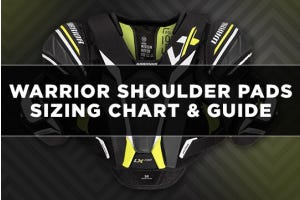What is Illegal Curve in Hockey?

Hockey, a sport known for its swift pace and intricate strategy, is underpinned by a detailed set of rules and regulations. These guidelines ensure fair play and maintain the game’s competitive integrity. Among these rules, the one governing the curve of a hockey stick holds particular significance, despite its seemingly minor role at first glance.
The curve of a hockey stick is not a trivial detail, but a critical factor that affects a player’s performance on the ice. It influences the handling, control, and shooting of the puck, playing a pivotal role in shaping both individual player performance and overall game results.
To maintain a level playing field and to prevent any player from gaining an undue advantage, the hockey rulebook introduced the illegal curve rule. This guideline stipulates a limit on the degree to which a hockey stick blade can curve, setting a clear standard for stick design and ensuring fairness in gameplay.
Nonetheless, despite its crucial role in the sport, this rule often presents a source of confusion, particularly for newcomers to the game. Understanding what constitutes an “illegal curve” or how much curvature is allowed on a hockey stick blade can be perplexing. What exactly makes a curve illegal? How much curvature is allowed on a hockey stick?
This article aims to demystify these questions. We will cover:
What is an Illegal Curve in Hockey?
When we talk about an “illegal curve” in hockey, we're referring to the curvature of the blade of a hockey stick that goes beyond the limits set by hockey's governing bodies. According to the rules put forth by USA Hockey and the National Hockey League (NHL), a blade must not exceed twelve and one-half inches (12 ½”) in length or three inches in width. Additionally, the blade must be beveled on all edges.
If a hockey stick doesn’t meet these specifications, it is considered to have an illegal curve. Moreover, hockey sticks constructed with materials not approved by the league are also deemed illegal. If such a stick is found during a game, it’s disallowed for use and could result in penalties for the player involved.
Notably, the NHL has an exception to this rule for players who stand at 6’6” or taller. These players can request the NHL’s Hockey Operations Department for permission to use a longer stick. If approved, these players can use a stick up to sixty-five inches (65”).
Illegal Curve FAQs
Is there an illegal curve in the NHL?
Yes, the NHL does have a rule regarding the curve of a hockey stick blade. According to the official NHL rulebook, a player’s stick blade cannot have a curve that exceeds half an inch. Any stick found to surpass this limit is considered to have an illegal curve and cannot be used in an official NHL match.
How much curve is allowed on a hockey stick?
In keeping with the official rules of the NHL, the curve on a hockey stick should not go beyond 3/4 of an inch at any point along the blade. This rule ensures fairness in gameplay, preventing any undue advantages that could arise from a stick blade with an excessive curve.
What curve do most NHL defensemen use?
The choice of a blade curve often boils down to a player’s position on the field and their personal style of play. However, most NHL defensemen lean towards a moderate curve on their stick blade. This type of curve allows for better control of the puck and more accurate passes, both of which are critical for a defenseman's performance.
What is the most used curve in the NHL?
Among NHL players, the P92 curve (also known as the Sakic curve) is quite popular. Named after hockey legend Joe Sakic, this curve is highly versatile and facilitates effective shooting, passing, and puck handling, making it a preferred choice for many players.
Learn More About Blade Curve in This Hockey Stick Blade Curve Guide from Hockey Monkey
To find out more, take a look at the comprehensive hockey stick blade curve guide provided by Hockey Monkey. This guide will assist you in choosing the right stick that perfectly suits your needs.
Knowledge of the rules, coupled with the right equipment, is key to excelling in the game. However, it also illustrates that the kind of gear you choose can dramatically affect your performance on the ice.
Maybe you prefer the classic feel of wooden hockey sticks? Or perhaps you're keen on customizing your equipment with separate hockey shafts and replacement blades? Each choice can impact your play style and performance in a unique way. So arm yourself with the information, choose the right gear, and hit the ice with confidence.









Login and Registration Form
or
Create an account